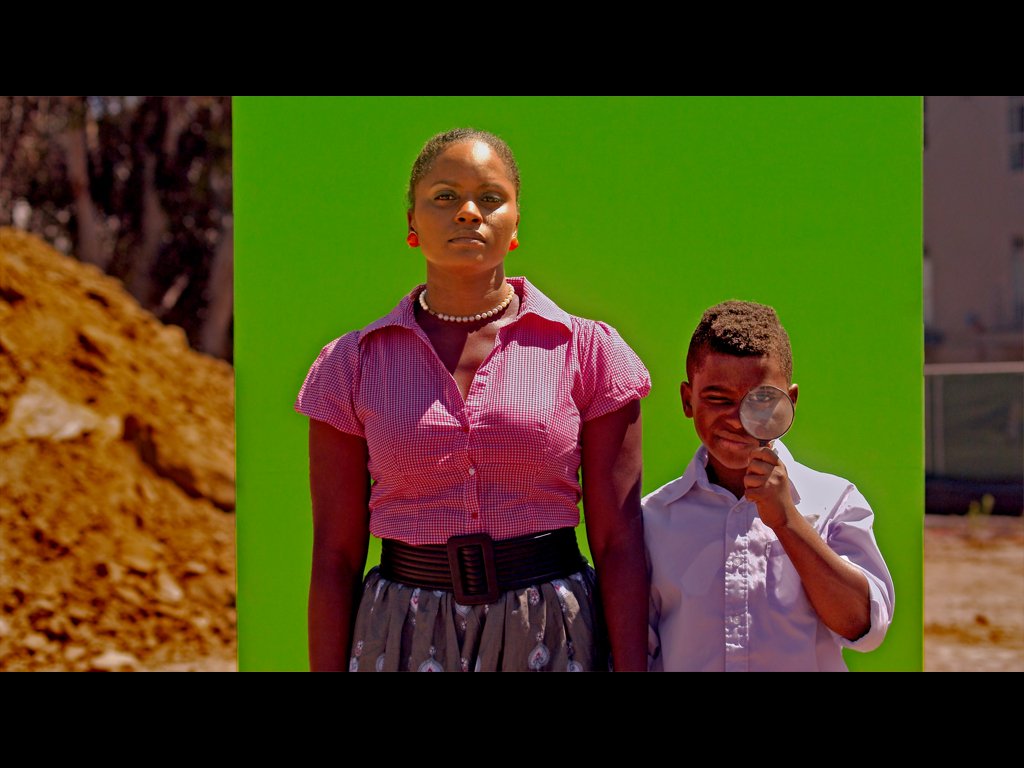Old Wounds, Dark Dreams
February 8 to May 19, 2023
Christian-Green Gallery
The video works in this exhibition meditate on anti-Black racism and the wounds it inflicts on the American body politic. Contemporary artists Charles Gaines, Rodney McMillian, Cauleen Smith, and Carrie Mae Weems here engage in appropriation or sampling—quoting other artists’ motifs, methods, and works—to represent troubling events. By adapting other cultural forms and putting them into new contexts, these four artists variously comment on, critique, or amplify the appropriated works’ meanings and create new ones.
In Smith’s Remote Viewing (2011) and Weems’s Constructing History: A Requiem to Mark the Moment (2011), the artists re-enact episodes from American history while also citing the work of older artists. Remote Viewing restages how a single-room schoolhouse, used by Black children in Sheridan, Arkansas, was violently destroyed by the local government as part of a forced relocation of the town’s Black residents after the ruling of Brown v. Board of Education. The video, which documents heavy equipment excavating a large square hole, evokes the Land Art of Michael Heizer and Robert Smithson even as it questions those artists’ motivations for forcibly altering the land. Similarly, Constructing History: A Requiem to Mark the Moment (2011)—on view in the Idea Lab—details Weems’s collaboration with students. Together, they studied key events in American history, such as the assassinations of Medgar Evers, Martin Luther King Jr., and Malcolm X, and reenacted moments from these events that, because they were captured in photographs, frame and sometimes limit our understanding of what happened. In this way, Weems examines the complex role photography plays in this country’s collective imagination and memory.
Gaines and McMillian also engage with art and artists of the past but focus on music. Gaines’s Black Ghost Blues Redux (2008), for instance, depicts Korean singer Hoyun Son first listening to and then singing Lightnin’ Hopkins’s 1964 blues classic “Black Ghost Blues.” Exploring whether the cultural specificity of the blues translates globally, Gaines’s video suggests that while the deep emotions expressed in blues music affect listeners universally, a chasm exists nonetheless between, on the one hand, registering the historic trauma the cultural form manifests and, on the other hand, conveying it. In Shelter (Crawl) (2015), McMillian nods to the grueling endurance pieces of artist Pope.L by wearing a camouflage hazmat suit as he crawls through an eerily deserted forest in the South. The artist sings the Rolling Stones’ “Gimme Shelter” (1969), whose moving lyrics describe the brutality of war and insurrection, to evoke the violence that has taken place in southern landscapes across the world, from warfare in the jungles of Vietnam to Civil War battles and racist attacks in the American South. McMillian’s appropriation of the band’s song—itself an expropriation of the blues by white Europeans—comments on culture’s circular nature.
The artists in Old Wounds, Dark Dreams turn away from the nostalgia that so often accompanies representations of the past. Instead, Gaines, McMillian, Smith, and Weems take more cerebral and aloof approaches to US history and the deep and deeply unresolvable feelings—grief, tenderness, and longing among them—that it elicits. The works on view here thus provide an opportunity to consider the long-term and difficult-to-represent effects of racial trauma on our country’s social fabric.
Cherise Smith, Ph.D.
Curator and AGBS Founding Executive Director

